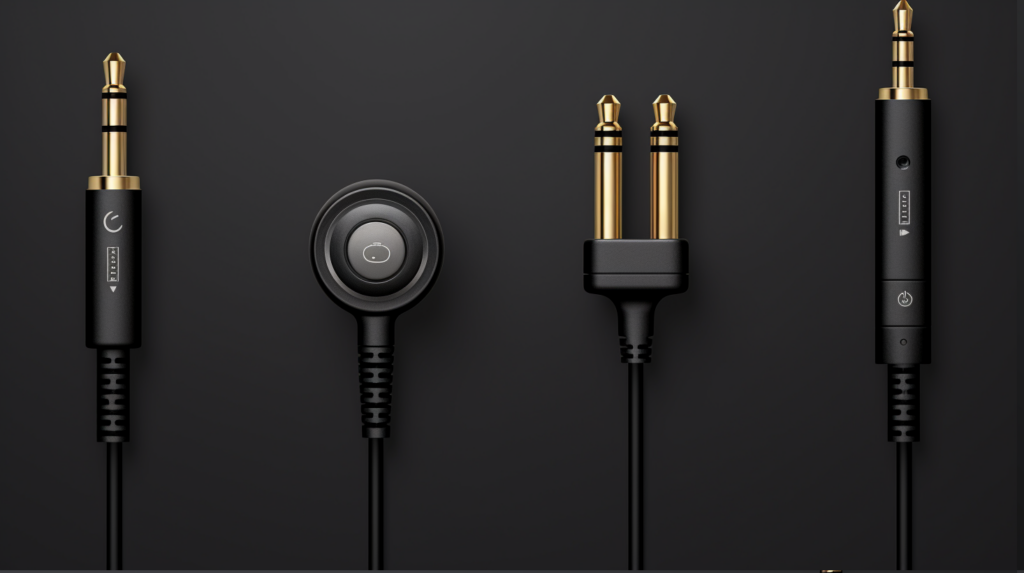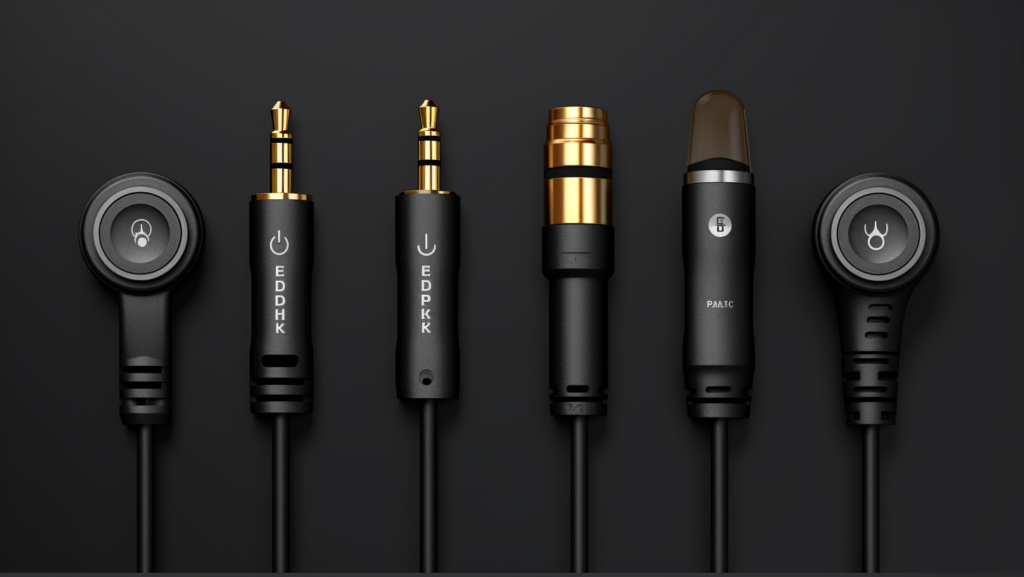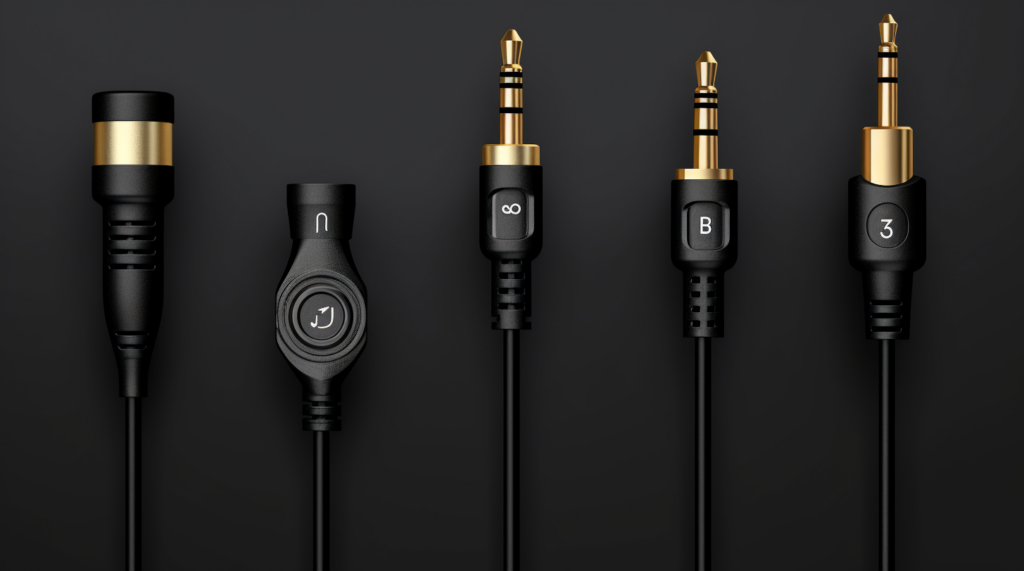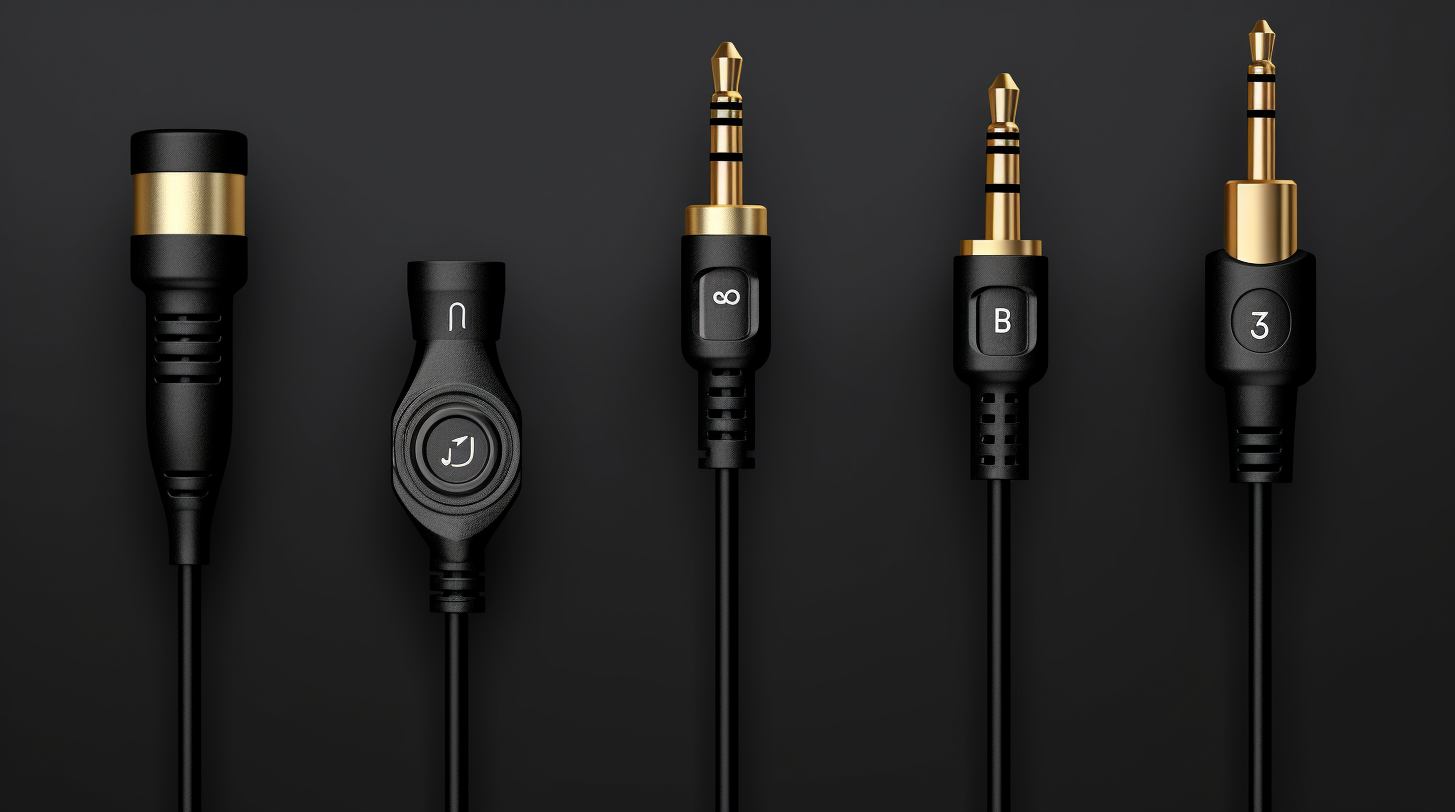Have you ever been frustrated by the seemingly endless array of types and sizes of headphone jacks? Fear not – understanding and choosing the right one is easier than it seems! With a little bit of knowledge, you can quickly become an expert in this audio world.
Let’s take a look at the different types of headphone jacks, their advantages and disadvantages, and how to pick the best one for your needs – so that you can plug in with confidence.
Overview of Headphone Jacks

Headphone jacks come in all shapes and sizes – it’s kinda crazy! Whether you’re looking for a portable listening device or one that offers exceptional sound isolation, there’s sure to be a headphone jack size that’ll meet your needs.
The most common types of headphone jacks include 3.5mm connectors, 2.5mm connectors, 6.35mm (1/4 inch) connectors, and XLR connectors. Each size offers its own set of advantages and disadvantages – depending on the application you’re using it for.
Smaller 3.5mm jacks are perfect for on-the-go listening, while larger 6.35mm (1/4 inch) jacks provide superior sound quality when connected to higher-powered music systems in the studio or at home. Additionally, XLR connectors offer balanced audio signals, which can help reduce noise interference from other electrical devices such as cell phones or laptop computers.
No matter what type of audio setup you have, there’s surely a headphone jack size that’ll work best for your needs!
Read More About: Are Airpods Waterproof? Best 2023 guide for you
Different Types & Sizes of Headphone Jacks

You may be familiar with 3.5mm headphone jacks, but did you know there are other types of headphone jacks?
2.5mm headphone jacks are smaller than the standard 3.5 mm and are typically used for professional audio equipment.
6.35mm headphone jacks, on the other hand, are larger and are often found on higher-end home theater systems or musical instruments.
USB-C headphone jacks have become more popular recently due to their convenience and ability to transmit both power and data simultaneously.
3.5mm sizes of Headphone Jacks
You’ve probably seen the 3.5mm headphone jack before; it’s one of the most common sizes for headphones. The 3.5mm audio jack is a type of “mini-jack” that allows you to connect your headphones and other audio devices to your computer or phone. This type of jack can be found on many wireless earbuds, laptops, and smartphones. It provides great sound balance and clarity, making it an excellent choice for everyday use.
The size of this mini-jack is small enough to fit into almost any device without taking up too much space, but powerful enough to provide superior sound quality. Here are three key features that make the 3.5mm headphone jack so popular:
1) Compact size – It’s small enough to fit in most devices without sacrificing sound quality or performance.
2) Versatility – It works with many types of audio devices including headphones, speakers, microphones, and more.
3) Durability – Its tough metal construction ensures long-term reliability and efficient operation.
2.5mm sizes of Headphone Jacks
You’ll find the versatile 3.5mm headphone jack on a variety of audio devices, from wireless earbuds to laptops and smartphones, delivering clear sound without taking up too much space. The 3.5mm headphone jack is made for stereo sound, so you can hear both sides of the conversation or music with ease. This type of jack is compatible with most wireless headsets and virtual audio systems. Plus, it’s easy to plug in and unplug devices from the audio output device with this size jack.
Pros | Cons |
|---|---|
Versatile | Not suitable for TV sets |
Compatible with wireless headsets & virtual audio systems | Does not support surround sound systems |
Stereo sound capability | Prone to static interference if not properly handled or installed correctly |
Easy plug-in/unplugging capabilities | Not as durable as other types of jacks |
6.35mm sizes of Headphone Jacks
The 5mm headphone jack is a great option if you’re looking for a more durable connection in audio devices. For example, some military headsets use this type of jack to provide reliable sound even in the harshest of conditions.
This size of jack can also be found on smartphones, tablets, laptops, and other personal audio devices. The benefit of using this size over others is that it offers improved soundproofing and cord management due to its unique design. Furthermore, the tight fit helps ensure a secure connection in order to get the best possible sound quality out of your device.
Additionally, the shape makes it easier to plug into different ports without having to worry about compatibility issues or damage due to improper fitting. All-in-all, 5mm headphone jacks are an ideal choice for those who need reliable audio performance with superior soundproofing and cord management features.
USB-C Headphone Jacks
Enjoy the flexibility and convenience of using USB-C headphone jacks for your audio devices. USB-C headphones are becoming more popular as a way to connect audio devices. They offer an enhanced level of compatibility, allowing you to use the same headphones across multiple platforms.
Here’s why USB-C headphone jacks should be considered:
- Increased headphone compatibility: Many newer devices have adopted this type of jack, making it easier to switch between different types of phones or tablets without having to buy new headphones each time.
- Improved sound quality: Connecting through a USB-C port can provide better audio output than traditional 3.5mm jack connections, producing clearer sound with less noise interference.
- Reduced portability issues: With their slim design, you don’t have to worry about accidentally breaking off fragile connectors when you’re on the go or carrying multiple audio sources in one bag or pocket.
- Easier setup: You don’t need additional adapters or cables for connecting your headphones anymore since they plug directly into the device’s USB-C port, saving both time and money in the long run.
USB-C headphone jacks offer many advantages over traditional 3.5mm options, making them a great choice for those looking for increased compatibility and improved sound quality in their audio experience!
Read More About: Airpods Flashing Green? Learn the best way to fix it
Advantages and Disadvantages of Each Type and sizes of headphone jacks

Choosing the right size of headphone jack can be a tricky decision, as each type has its own advantages and disadvantages that you need to consider.
The most popular sizes are 3.5mm, USB-C, and Lightning jacks.
3.5mm headphone jacks offer portable convenience and are compatible with many devices. However, they lack the latest wireless technology found in USB-C or Lightning jacks.
USB-C is becoming increasingly popular for its compatibility with newer smartphones and laptops but may not be available on older devices.
Lastly, Lightning jacks are Apple’s proprietary tech and provide high-quality audio but require special adapters for use with other devices aside from iPhones or iPads.
Whichever type you choose, make sure it fits your device’s ports as well as your lifestyle needs.
Read More About: AirPods Connected But Sound Coming From Phone
How to Choose the Right Headphone Jack

When it comes to choosing the right headphone jack, there are a few factors you need to consider.
Firstly, think about what device you plan on using with your headphones and make sure the jack size is compatible.
Secondly, think about the sound quality that you need as different sizes offer different levels of clarity and bass response.
Finally, take into account any other features such as noise-canceling or wireless capabilities that may be important for your needs.
Consider Your Device
Check what types and sizes of headphone jacks your device has before selecting a pair of headphones. You should consider the following factors:
- Noise Cancellation: Many headphones are designed with noise cancellation to help block out background sounds, making it easier to focus on music quality.
- Music Quality: Depending on the type of headphone jack your device has, you may be able to experience higher-quality audio than is available with other types of jacks.
- Compatibility: Make sure that the headphone jack you choose is compatible with your device and will work properly without any issues.
- Durability: Select a headphone jack that offers durability so that it can withstand regular use over long periods of time without breaking down or becoming damaged easily.
By taking these factors into consideration, you’ll be able to make an informed decision about which size and type of headphone jack works best for your needs and preferences.
Consider Your Sound Quality Needs
Getting the right sound quality is essential for enjoying your music to its fullest potential. When considering your headphone jack size, device compatibility and sound quality should both be considered.
If you are connecting your headphones to a mobile device, then a 3.5mm or 2.5mm jack will likely suit your needs best since these are the standard sizes used in most smartphones and tablets.
On the other hand, if you’re looking for higher-end sound quality from larger devices such as computers or amplifiers, then larger 6.3mm jacks may be more appropriate due to their ability to provide more powerful audio output than smaller jacks can offer.
It’s important to note that some products may require an adapter in order for certain headphones with larger sizes of connectors to work properly with them.
Troubleshooting Tips for Your Headphone Jacks
If you’re having trouble with your headphone jacks, it’s important to remember that even the simplest of issues can be solved using troubleshooting tips. For instance, if a pair of headphones isn’t providing sound through one ear, try switching the jack around to see if that solves the issue.
Other troubleshooting tips include: – Checking for compatibility issues between your device and audio source – Ensuring cables are tightened properly – Replacing worn-out cords – Making sure audio settings are adjusted correctly for optimal audio quality
If any of these steps don’t work, it might be time to invest in a new set of headphones or contact customer service for further assistance. With some patience and attention to detail, you should be able to identify and resolve any problems with your headphone jacks quickly!
Frequently Asked Questions
What is the difference between a 3.5mm and 2.5mm jack?
The difference between a 3.5mm and 2.5mm jack is in the size of the connector cables and thus, the audio quality of sound clarity. The 3.5mm jack offers better sound clarity as it can carry more information than the smaller 2.5mm jack. This makes it ideal for higher-fidelity audio applications such as music or gaming.
How do I know which type of headphone jack is compatible with my device?
To determine which type of headphone jack is compatible with your device, check the plug types that your headphones use and compare to the ones supported by your device. The quality of sound will depend on the type of connection used, so make sure you have a reliable one.
What are the benefits of using a wireless headset?
You can experience the freedom of wireless headsets without worrying about any risks. With a longer wireless range and better battery life, you’re free to move around without any cords restricting your movements. Enjoy an uninterrupted listening experience with no risk of cord tangles!
How can I reduce the risk of damage to my headphone jack?
To reduce the risk of damage to your headphone jack, use noise cancelling headphones and keep cable lengths short. Additionally, be mindful when inserting and removing the jack, handle it with care and avoid any unnecessary force.
Is it possible to convert a 3.5mm jack to a 2.5mm jack?
Yes, it’s possible to convert a 3.5mm jack to 2.5mm with an audio adapter or headphone converter. These devices allow you to plug your headphones into different size jacks and can help protect against damage.
Conclusion
You’ve learned the different types of headphone jacks and their advantages and disadvantages.nnYou now have the tools to make an informed decision when it comes to your audio setup.nnAnd with a bit of luck, you’ll never have any issues with your headphone jacks again.nnAs it turns out, having the right jack for the job can make all the difference – who knew?nnWith a little knowledge and a few tips, you’re well on your way to enjoying uninterrupted audio bliss!
